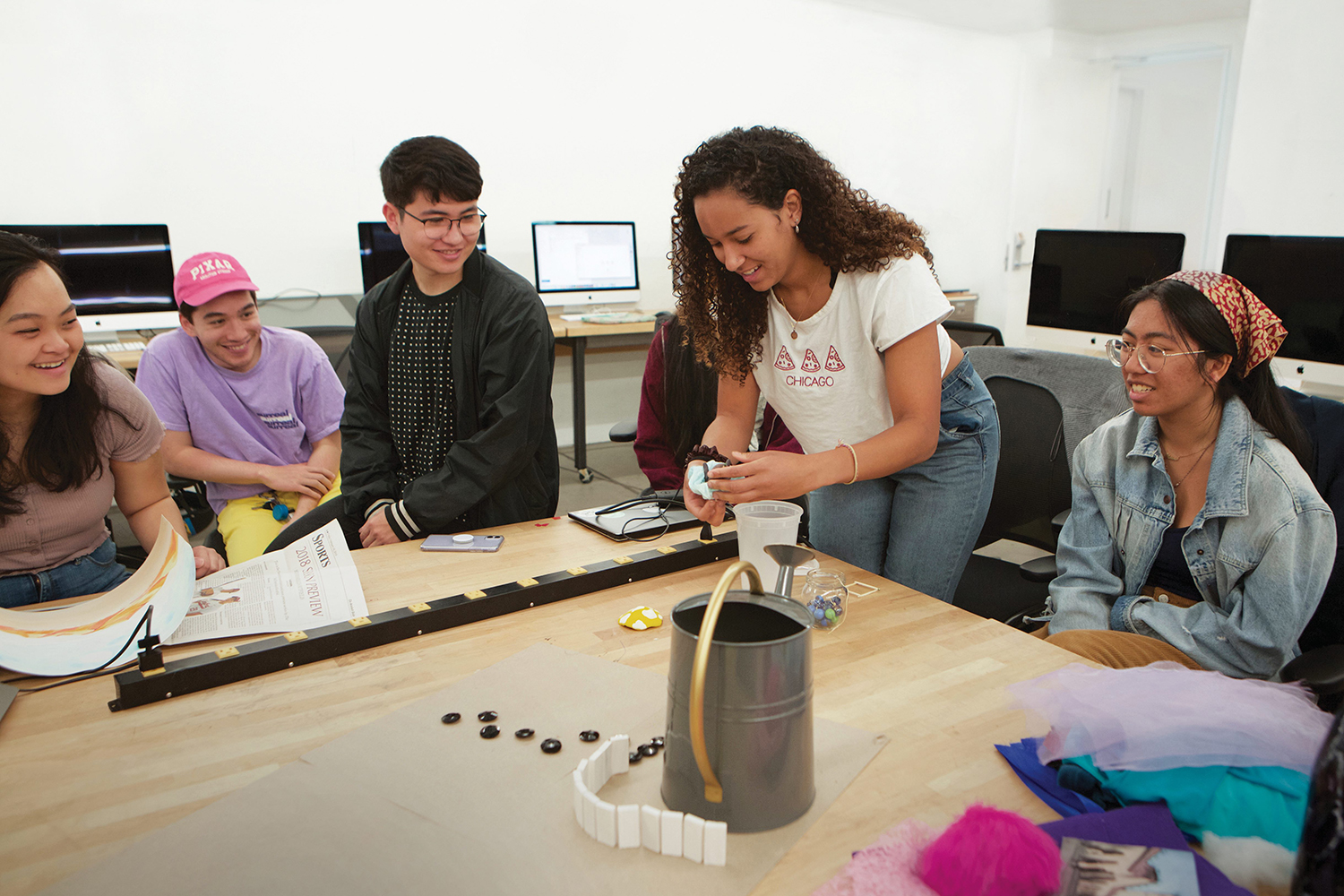Ways program helps students explore diverse paths
Stanford’s “Ways of Thinking/Ways of Doing” program celebrates 10 years of helping undergraduates explore diverse interests and academic paths.

Students in Introduction to Animation – one of the many courses offered that fulfills the Creative Expression Ways requirement – present final projects to classmates. The course exposes undergraduates to animation techniques including stop-motion such as claymation, pixilation, rotoscoping, and time-lapse. (Image credit: Nadine Priestley)
Before Jacky Zhao arrived at Stanford as a first-year student, he knew his primary focus would be in STEM. He had long been curious about entrepreneurship, but thought it might be an area he’d have to wait to pursue until after graduation. Instead, he was surprised to find a Ways-certified economics course that enabled him to explore his entrepreneurship interest alongside his STEM courses.
Exploring diverse fields
In order to graduate, students must complete 11 “Ways of Thinking/Ways of Doing” (Ways) courses in eight categories, including Creative Expression, Ethical Reasoning, and Exploring Difference and Power, among others. Among the nearly 2,000 annual courses that fulfill a student’s Ways are undergraduate programs like COLLEGE, ITALIC, and Structured Liberal Education (SLE), as well as some Introductory Seminars courses.
This year, the program is celebrating 10 years of supporting students who may know what they want to study, but have areas of interest they may not have considered.
“For some students who have diverse interests and aren’t yet sure of their major, it’s a great template for exploration. For other students who are very focused in a particular direction, it does encourage them to take different perspectives and to explore different ways of doing and ways of thinking,” said Sharon Palmer, senior associate vice provost in the Office of the Vice Provost for Undergraduate Education (VPUE).
In 2012, the Study of Undergraduate Education at Stanford (SUES) recommended the change that led to the Ways of Thinking/Ways of Doing breadth system as a core part of its aims for a Stanford undergraduate education. The Faculty Senate and SUES argued at the time that undergraduate education would be better structured by shifting from a discipline-based to a skills/capacity-based model of achieving breadth.
In partnership with VPUE, the Breadth Governance Board (BGB) oversees and implements the Ways of Thinking/Ways of Doing breadth requirement. The board includes faculty members from diverse disciplines and is responsible for articulating the purpose of the breadth requirement and the rationale for each of the eight Ways categories.
In spring 2020, the BGB conducted the Engaging Diversity recertification review project, which reviewed courses to ensure that they met the criteria. In addition, the review project ultimately led to a name change when “Engaging Diversity” Way was renamed to “Exploring Difference and Power,” to reduce confusion among students and faculty about the nature of courses within that category, and to accurately capture its focus and emphasis on power and inequity between groups.
Setting a foundation
Fundamentally, the BGB ensures that Ways provides a diverse set of general education courses for Stanford students. BGB Chair Hideo Mabuchi, professor of applied physics, said he strongly believes that liberal education is the foundation for every student’s future path.
“No matter what profession you end up working in, there is a whole portfolio of distinct ways of approaching problems,” said Mabuchi. “It’s important for students to be aware of the very different perspectives and methods that are practiced in different corners of campus and to encourage them to think about how those can all be applied.”
For Isabelle Foster, BA ’18, MA ’19, the Ways requirement provided her with the opportunity to meet people across the university and discover new interests. A public policy major, she enrolled in a guitar course to fulfill one of her Ways requirements. Now an impact investing specialist at the World Wildlife Fund, Foster still plucks her guitar occasionally at her home in Washington, D.C., and said her Creative Expression course offered her a distinctly different intellectual and creative outlet.
“I appreciated that it helped me cultivate this broader, holistic thinking and skill sets that I’ve been able to use not only as a student in my classes, and particularly with the independent projects that I did, or the capstone projects that were very interdisciplinary, but also outside of that,” she said. “Those skill sets were and have been valuable in any of the careers that I have pursued.”
Learn more about Ways at https://ways.stanford.edu/.